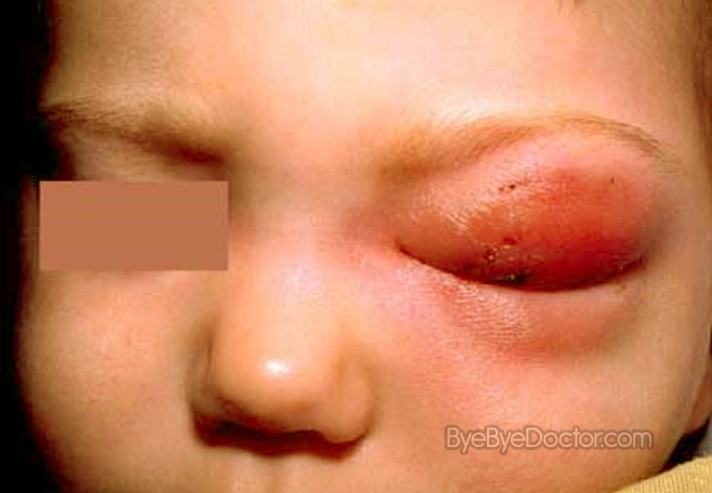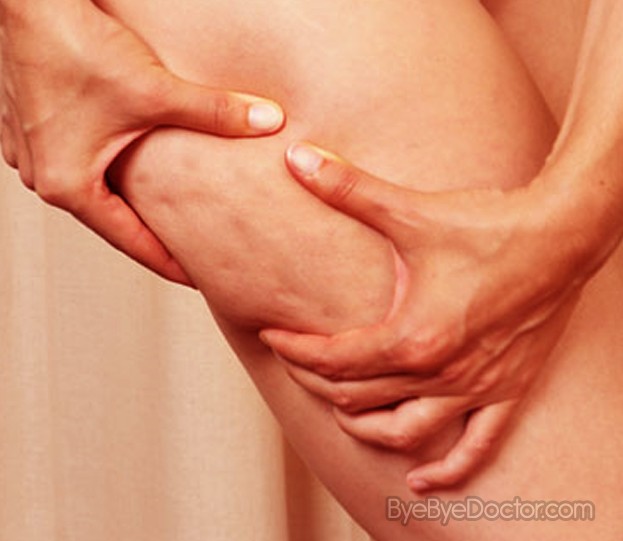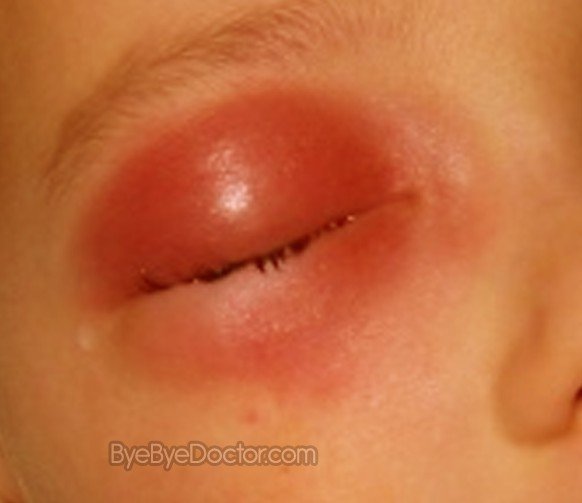What is Cellulitis?
Cellulitis is a common infection of the skin and structures beneath skin, including the fat tissue. Cellulitis is most common on the legs, but can occur anywhere on the body. Although cellulitis may affect the top layer of skin (called the epidermis), it is classified as infection of the structures beneath the skin, such as the structural tissue below the skin (called the dermis) and the fat tissue (called subcutaneous tissue) which lies below the dermis and above the muscle. Cellulitis usually begins as a small, red area on or below the skin. In the first stages, cellulitis is often mistaken for a bruise, scratch, or insect bite, but can quickly spread into a much larger area of the skin, structures under the skin, or into the bloodstream.
Cellulitis Symptoms
Cellulitis usually begins as a tender, red spot on or slightly below the skin, and can often be mistaken for an insect bite or bruise. There are several symptoms of cellulitis, as listed below:
- Reddened, inflamed area on the skin, often swollen, hot, and painful.
- Generalized signs of infection, including fever, chills and/or sweating, and aches.
- Red, hot streaks running down an arm or leg can indicate cellulitis in or around a vein, or that has spread into the bloodstream.
- Most cellulitis occurs on the calf of the leg, but it can occur anywhere on the body.
There are other conditions that have very similar symptoms to cellulitis that a physician will rule out before diagnosing cellulitis. Impetigo is another skin infection, however it only affects the surface of the skin. A condition called ‘stasis dermatitis’ frequently affects individuals who are elderly, obese, and/or with poor leg circulation, causing reddened, scaly skin of the lower legs and is often mistaken for cellulitis. Deep vein thrombosis, or DVT, also mimics the symptoms of cellulitis, however is much more serious as it involves blood clots in the legs and can lead to a stroke, heart attack, or pulmonary embolism.
Cellulitis Causes
Cellulitis occurs when bacteria enters through a break in the epidermis and invades the structures below the surface of the skin, including the dermis and/or subcutaneous tissue. Breaks in the skin are usually caused by insect bites, scratches, cuts, abrasions, surgical incisions, recent tattoos, medication or drug administration via needle, or trauma. Other medical conditions that cause the skin to be dry, flaky, brittle, or irritated, leave the skin easily broken and increase an individual’s susceptibility to cellulitis. These conditions include eczema, psoriasis, athlete’s foot, dermatitis, other skin rashes, and use of corticosteroid medications. Cellulitis can occur by this route anywhere there is a break in the skin.
It can also be caused by medical conditions that decrease circulation, and most often occurs in the lower legs, which is the area of the body most affected by poor circulation. This conditions include pregnancy, obesity, peripheral vascular disease, diabetes, and morbid obesity. Individuals with morbid obesity are particularly prone to cellulitis of the lower legs and the abdomen, possibly because of the increased amount of subcutaneous tissue of the abdomen. It is also possible that morbidly obese individuals have higher risks of cellulitis in the abdomen because of high rates of diabetes in this population, which require multiple injections of insulin each day, creating a route of entry through the skin for bacteria to enter.
Although a variety of bacteria may be responsible for this condition, the most common causative agents are strains of Streptococcus and Staphylococcus. Both of these bacteria naturally live on the skin, but if they invade a deep wound or enter a superficial wound of an individual with other medical conditions, they can easily cause cellulitis. Other strains of bacteria that have been known to cause cellulitis include Pneumococcus, Haemophilus influenzae, and Clostridium. Another bacteria called MRSA (methicillin-resistant Staphylococcus aureus) can also be a culprit in causing cellulitis, and has recently received much attention from the media.
Cellulitis Treatment
The treatment depends on the severity of the infection. Cellulitis may be a small, localized infection or it may spread to the lymph nodes and bloodstream and cause septicemia, or blood poisoning. A doctor will assess the severity based on the symptoms the patient is experiencing, physical examination, and possibly wound or blood cultures to determine the bacteria causing the cellulitis.
Small, localized cases of cellulitis may be treated with oral antibiotics prescribed by a doctor. The symptoms are also treated to relieve the discomfort usually caused by cellulitis. There are measures that a doctor may recommend to reduce the swelling and pain, some of which are listed below:
- Over-the-counter anti-inflammatory drugs (such as acetaminophen or ibuprofen) may be given, which reduces inflammation around the cellulitis and also relieves pain.
- When cellulitis is causing moderate to severe pain, the doctor may choose to prescribe a stronger pain medication, such as Vicodin (hydrocodone and acetaminophen).
- The doctor may also order cold compresses be applied to the area to further reduce pain and swelling.
- It may also help for the individual with cellulitis to keep the affected area elevated and reduce any unnecessary activity.
If an individual is has cellulitis over a large area, or they are experiencing symptoms that may indicate the infection from the cellulitis has spread into the lymph nodes or bloodstream (such as fever, chills, aches, etc.), hospitalization may be required. If an individual is hospitalized, they are often treated with intravenous (IV) antibiotics, which are administered through a vein directly into the bloodstream. Blood and wound cultures are taken to determine the exact bacterial organism causing the cellulitis so that the most effective antibiotics can be administered.
http://www.Symptoms-Causes-treatment.blogspot.com detect diseases at an early stage symptoms, and find out the causes and treatments best suited.
In rare cases, it is necessary to treat cellulitis surgically with a procedure called an incision and debridement, or an I&D. During this procedure, the individual is given anesthesia in an operating room and the area with cellulitis is cut open. The infection is cleaned out, and if necessary, damaged or destroyed tissue to surgically removed, then the incision is stitched or stapled closed. This is usually considered as a last option after an individual with cellulitis has been hospitalized and treated with IV antibiotics, and usually because the patient has other medical conditions (immune issues or poor circulation) that prevent the cellulitis from being resolved.
Cellulitis Complications
Although most cases of cellulitis are resolved without any problems, there are risks of complications. Certain groups of people are at high-risk for developing complications from cellulitis. Elderly persons and those with immune deficiency disorders, because the immune system is weakened and cannot fight the bacteria causing the cellulitis or prevent it from spreading into other areas.
Individuals with diabetes are at particularly high-risk for developing complications from cellulitis for several reasons. Diabetes causes weakening of the immune system, and in many cases peripheral neuropathy, causing the area of cellulitis to be less painful and less noticeable to the individual. The cellulitis is often more advanced by the time the diabetic individual seeks treatment.
Complications from cellulitis are related to the infection spreading into other areas, particularly the lymph nodes and bloodstream. A list of the most common complications follows below:
- Septicemia (also called blood poisoning), caused by bacteria entering the bloodstream.
- Chronic swelling and inflammation, caused by repeated cases of cellulitis in the same area damaging the lymphatic system.
- Lymphangitis, or an infection of the lymphatic system.
- Meningitis, or inflammation of the membranes surrounding the brain and spinal cord, usually caused by cellulitis of the face.
- Osteomyelitis, or bone infection, caused by spread of bacteria to the bones.
- Gangrene, caused by bacteria destroying fat or muscle tissue.
There is a very rare form of cellulitis, clinically referred to as necrotizing fasciitis. The mainstream media has labeled this condition as “flesh-eating bacteria”, however this is inaccurate because the bacteria do not eat flesh. Necrotizing fasciitis is actually caused by the same bacterial organism that cause cellulitis, however in rare cases (almost always in immune-compromised individuals), the bacteria spreads completely through the subcutaneous tissue onto the fascia (surface of the muscle tissue). Necrotizing fasciitis is distinguished by the bacteria causing complete cell death (and therefore dead tissue), and not just infection, as is caused by cellulitis.
Is Cellulitis Contagious?
Cellulitis is not a contagious condition. Although the bacterial organisms that cause this condition are infectious, cellulitis is not considered contagious because the infection lies below the surface of the skin.
When recovering from cellulitis at home, there is virtually no risk that the infection could spread to family members or other persons. However, if the area of cellulitis becomes open and begins to leak, the area should be covered with a dry bandage, and dirty bandages prompted disposed of, to prevent others from coming in contact with infected material.
Cellulitis Pictures





